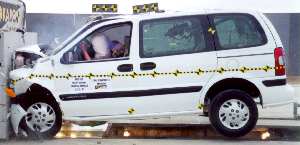May 15, 2011
How To Save Money On Car Insurance
Do you like this story?
 Image ,
Image ,With elevated gas prices affecting the cost of owning a car, it’s also worth looking into ways to cut other related operating expenses. One place to start is car insurance.
All drivers must carry insurance protection, but many people just pick an insurer after they buy their first car and don’t look at the details of the policy for years, which could leave money on the table. Below are some ways to find the right policy and cut your premiums.
1. Do an annual rate check. Check rates from other companies to make sure you are getting the best deal. Many state insurance departments offer guides to available services, and while online you can find insurance comparison tools.
Of course, personalized quotes aren’t immediate and often require a call back from an agent, but comparison shopping online can be a time-efficient way to find a better deal.
2. Pick a top-rated insurer. When we last surveyed readers/subscribers on their auto insurers, we found that all rated companies did well, but some were better than others with dealing with claims, payments, and non-claim problems. See our full Ratings of car insurers.
3. Maintain good credit. Regularly check your credit score since a low score may impact your premium.
4. Set the right deductable. A higher deductible reduces your premium, but you have to pay more out of pocket in the event of an accident. If you have a good driving record and haven’t had an accident that was your fault, you may want to gamble and opt for a higher premium. The reward for this risk could be up to a 40 percent savings.
5. Review your coverage. Check to make sure you have enough liability coverage for bodily injury and property damage. Over time, costs and risk increase, and so should your coverage. Simply put, minimal coverage gives you minimal protection.
6. Report reduced mileage. If you’ve changed jobs, are now working at home, or have become unemployed, call your insurer. By driving less, you may qualify for a lower premium.
7. Watch crash repairs. Check to see where your insurer sends you for repairs, as the repair shop may push you to use cheaper replacement parts, rather than original equipment from the manufacturer (OEM parts). Tests have found that some non-OEM parts can fit poorly, are more prone to rust, and don’t necessarily meet federal safety standards.
8. Choose the right car. Vehicle damage and the cost for repair is a big part of the price of auto insurance. When looking for a new car, compare the data on collision by vehicle model. The Insurance Institute for Highway Safety (IIHS) has information and losses by vehicle model at www.hldi.org/research/hldi/composite_intro.html.
Your car dealer should also have a booklet on relative collision insurance cost produced by the National Highway Traffic Safety Administration (NHTSA). Also, estimated insurance fees are part of the owner cost information Consumer Reports provides online for all new models.
9. Beware of scams. Crooks can rip off drivers with staged accidents, which could result in an insurance claim against you. To avoid this unpleasant scenario, follow good driving practices and if you are in a crash, photograph the crash scene and always call police to report the incident.
10. Take advantage of discounts. Discounts are available for drivers considered to be lower risk (older, married, and/or long safe driving record) or those who take a driver-training course. Anti-theft and certain safety equipment can also reduce your cost.
Bundling insurance with auto and home is another option to consider, but check out the total costs with and without combining policies to see which scenario is cheaper.
[source-consumerreports]

Labels:
Auto Market,
Business,
Car Insurance,
Consumer Reports,
Google,
Insurance,
Insurance Institute for Highway Safety,
Microsoft Windows,
National Highway Traffic Safety Administration,
Technology
This post was written by: Rahul Bhatia
Rahul Bhatia is a professional blogger, web designer and front end web developer. You can Follow him on Twitter and can connect him on Facebook
Subscribe to:
Post Comments (Atom)













0 Responses to “How To Save Money On Car Insurance”
Post a Comment